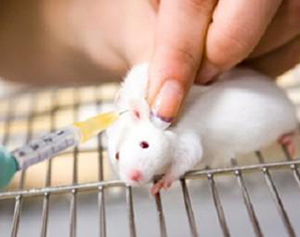The Botox loophole and high number of severely painful test on animals in Irish Laboratories in 2019, latest statistics show
The latest official annual figures for Irish animal testing reveal that 139,343 experiments likely to cause pain and suffering were conducted during 2019.
As has been the case since 2008, the significant majority of experiments in Irish laboratories have involved crude lethal dose procedures on mice (dying painfully from suffocation) for the purposes of marketing Botox-type products, many of which are for cosmetic purposes. In 2019, around 96,000 mice were subjected to these tests.
The loophole allowing animal toxicity testing of cosmetic botulinum toxin must be closed. Despite a supposed EU ban on animal testing for the sake of cosmetics, botox-type products avoid this because of the way they are administered (by injection) and because it is also used in medical procedures. Hence cosmetic botox is still being tested on animals under the false pretext of medicinal use.
Since the establishment in Ireland of pharmaceutical company Allergan and similar companies that conduct these tests on cosmetic botulinum toxin, animal testing expanded rapidly in Ireland from 64,378 in 2007 to a staggering 249,206 in 2009, with the numbers remaining at or above 200,000 until 2019.
The overall severity of the experiments on animals in Ireland also remains disturbingly high, with 18,543 tests involving ‘severe’ severity, and 40,453 resulting in ‘moderate’ severity. The ‘moderate’ label is somewhat misleading, as such tests can involve poisoning that stops just short of death, giving animals cancer and organ transplantation experiments. [1]
Another worrying development revealed by the statistics is the big rise in experiments in the ‘Basic research’ category, to 13,910 compared with 7,887 in 2018. Such procedures are particularly hard to justify for ethical and legal reasons because the main aim is the production of scientific knowledge with intrinsically uncertain utility and application. The IAVS is particularly strongly opposed to these experiments, as they represent the most egregious animal abuse in relation to the legal requirement for a harm-benefit assessment of animal experimentation projects.
These basic research tests also undermine the EU and Irish Government’s stated commitment to replacing animal experiments, as they create and ‘bake in’ data derived from animal models of human disease, encouraging future research paths that cling to animal methods rather than fostering knowledge based on more human-relevant techniques. There are serious ethical and scientific problems with the continued sacrifice of animals merely for the pursuit of knowledge.
The IAVS welcomes the reduction in the numbers of animals being made to suffer in Irish laboratories in 2019 - a drop of about 60,000 compared with 2018 – which is a significant step in the right direction. This is largely due to the increasing application of cell-based methods for testing Botox-type products, which avoids poisoning live animals and provides more reliable and informative results in relation to likely human reactions.
However, the continuing death rate is still very high by historical standards and so much, much more needs to be done to finally eliminate animal suffering in Irish labs.
[1] Annex VIII, EU Directive 2010/63/EU


